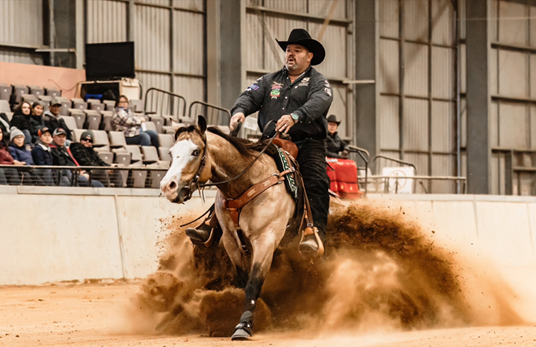Shane Sainsbury of Sainsbury Performance Horses is a leading Reining Industry Professional, who trains and shows horses for owners and clients, and a highly valued Earlwood Ambassador. He also provides coaching to a huge number of Non Pro riders throughout Australia, with clinics and lessons.
He competes in the Open level category of reining, and says it's a great industry, with many levels, to ensure you are competing against other riders of the same level. He believes in being a solely positive influence in a horse's training, and loves to share his knowledge and skills with others, to encourage them to reach their potential.
In this blog, he imparts his knowledge surrounding the main points of The Stop - probably the element reining is most famous for:
The Stop - Run Downs that matter.
Let’s face it - a big part of Reining is the stop. Sure it has many other components, but when people think reining, they think of that amazing sliding stop.
Most people starting out dreading the run down and stop, and for a beginner it's scary. You’re running at speed and worrying if your horse is going to stop or bounce you out of the saddle when it does.
Well I hope this makes you feel better - you’re not alone - we were all at that stage at one point. It’s about confidence, both ways, your confidence in your horse and also your horse's confidence in you.

Who has found themselves making these common mistakes?
- You are worried about the horse going too fast in the run down so you turn the corner, and slow down.
- You get tense, lean forward and look down and put all your weight over the shoulders - shoulders that need to elevate to allow your horse to stop.
- Or you build really slow then realise you’re about to go past that prize centre marker where you will finally be allowed to stop, so you burst a little then throw your self backward, miss-time and scare your horse. Your horse bounces, then you rock forward and kind of stop, only to have a half stop if you're lucky. And to top that off you have a 2-point penalty for stopping before the centre marker anyway.
How many times do you see this? Yep, we have all done it.
A stop is normally made up of 3 sections: The run down, the actual stop and the roll back.
Let's talk about the run down and stop.

Three things I've had drummed into me that I pass on to my non pros are:
- Get straight.
- Build speed gradually, do not burst.
- Sit back, look up, and let the horse stop. Do not make it - allow it to stop.
The horse needs to be running straight. A horse that's not running straight will stop with its shoulders or hind end to one side. We want everything going forward straight.
Build speed gradually. Pushing up the throttle in a rundown isn't like shooting the horse out of a cannon, or holding a pinball machine back until the last minute. Instead, the rundown should be a smooth acceleration up to a speed where the horse can go into the ground with momentum, to make that sliding stop.
Visualize a speed boat driving on the water. When it accelerates, its back end is down, front end is up - or - hocks down, shoulders up. When the boat slows down, the front of the boat goes down and the back comes up. Or in your horse's case, the shoulders drop down and hocks raise up.
If a horse is building speed before the stop, you can allow that horse to stop and it should be in the correct position, with shoulders up and hocks down.
Common mistake that will hamper that stop is slowing down before the stop.
Sit back and look up. For me this is such an important point. Your shoulders should be behind your hips. I point my buckle forward, square toward my stop. Chin up, eyes up, and feet in front of my hips with toes up. All you need to do from here? Give the cue.
This puts you in the correct stopping position for you to 'stay out of your horse's way' and allow them to do their job.
We have 3 main cues for a horse to stop:
Slight draw of the reins - Soft draw, never be quick, take the slack out of the rein and draw, then once the horse commits its hocks to the ground, give back.
Voice - Say "Whoa”. A long, loud Whoa gives your horse time to process it. Make the word long and mean it.
Legs off - Make sure your horse understands or can feel the difference between legs on and legs off.
Each of these cues should schooled separately. The better your horse understands these cues, the better they will respond to your cue or multiple cues to stop come showtime.
Drawing the rein to ask the horse to stop can still be willingly guided as long as you are soft and slow and the horse gives to the rein and doesn’t show resistance.
A horse that runs down and stops off a loose rein (big drape in the rein) and stops correctly, should get increased maneuver score for a higher degree of difficulty over a horse that runs down and has drawn on to stop them.
In summary:
Show at the speed your horse is comfortable showing at, not above that.
Stopping takes practice and timing. Work with your trainer to build that confidence. It's time in the saddle and doing this over and over again until it's second nature.
Reining is hard. If it was easy, everyone would be doing it.
Remember, every Pro was once a Beginner.
Shane.

For a brief summary and breakdown of reining lingo, please enjoy Shane's other blog What Is Reining?


1 comment
GREAT Article 💥 about the wonderful world of Reining in Australia 🇦🇺
Absolutely addictive 🤠 The Horse are Beautiful Athletes with extra long full manes & Tails. 💎 EARLWOOD hoods are must for there wardrobe 🦄